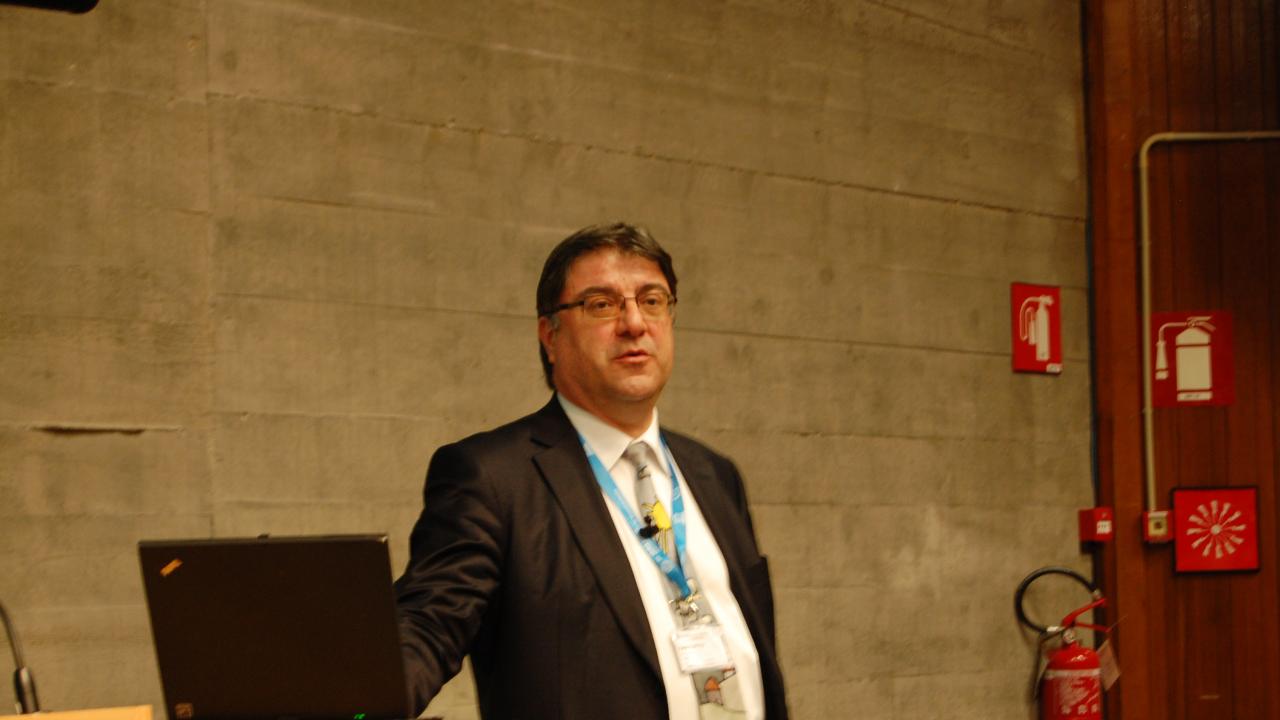
Niyazi Serdar Sariciftci, a world-renowned expert on photovolatics, shed light on using organic nanostructures for tapping into solar energy. Speaking at ICTP's colloquium series on April 13, Sariciftci explained how improving organic nanostructures, which act as semiconductors in solar cells, can drastically bring down costs of solar energy conversion.
High costs of very pure silicon, the semiconductor currently used to convert solar energy into electricity, have so far limited the widespread use of solar power. But, with increasing oil prices and energy demands (which are projected to go up to 30 terawatts by 2050), finding better solutions to tap into solar energy have become imperative, Sariciftci said.
Organic semiconducting inks are currently under study for developing efficient, low-cost solar cells, but these have a shorter life-span and a shorter photon absorption band (limiting the wavelengths of light that can be absorbed) than silicon-based cells. The energy-conversion efficiency of these organic photovoltaic cells is currently around 8% as compared to 20% in silicon-based devices.
However, Sariciftci pointed out recent research advances that show a bright future for organic solar cells. For one, chemists are working on manipulating the structures of the organic substances so that these can absorb sunlight over a greater bandwidth range. Addressing the theoretical physicist in the audience, Sariciftci said that theoretical predictions for experimentalists to work on would help in devising better organic nanostructures.
While converting solar energy into electricity would be the first step, Sariciftci wants to go a step ahead and look into directly converting solar energy into chemical energy. This, according to him, is a "final frontier" in solar energy conversion.
















